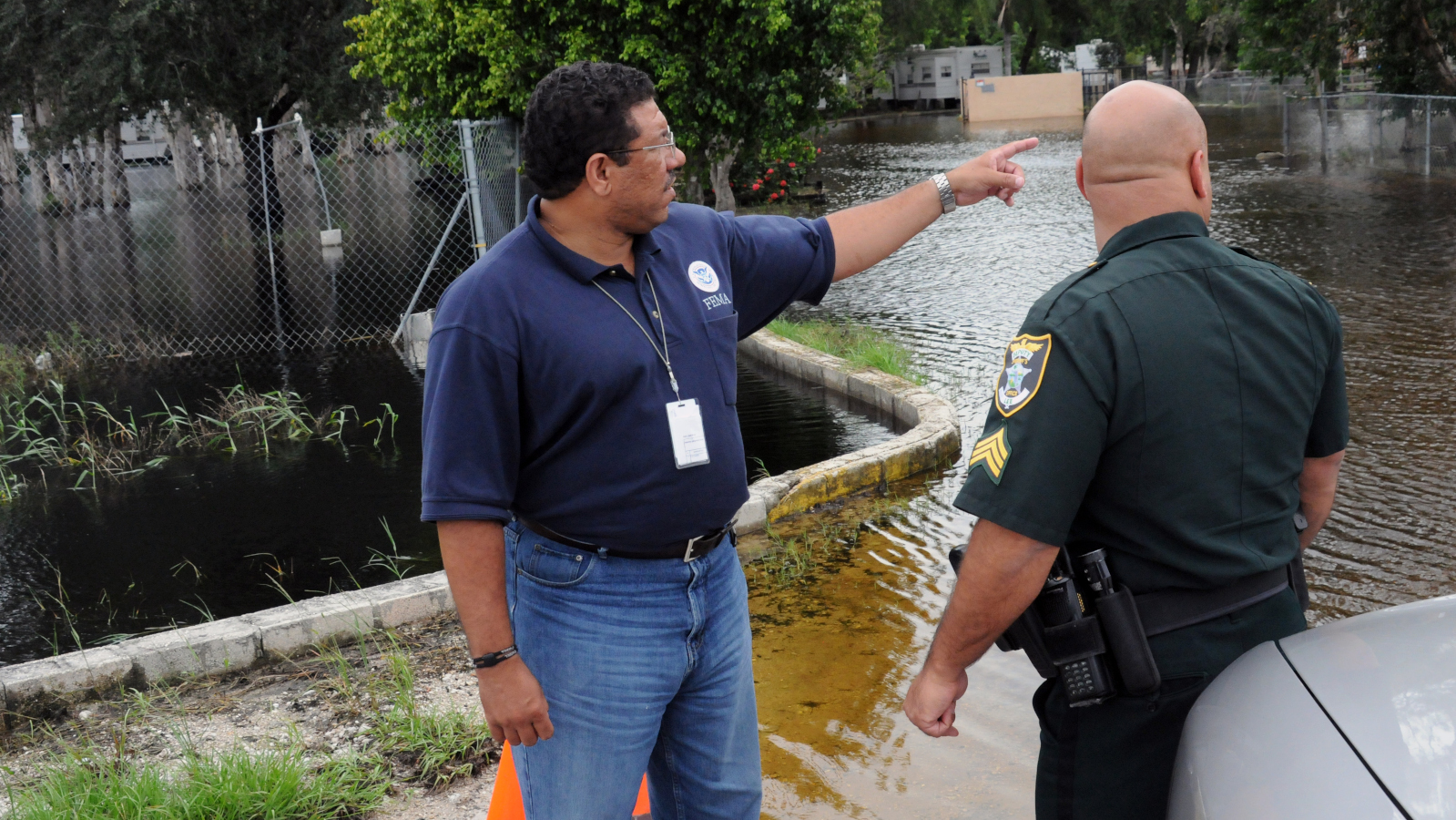
The Florida Office of Insurance Regulation heard a rate hike request from First Community Insurance that cited reinsurance costs covering major catastrophes as one of its driving forces. | By Andrea Booher, FEMA/Wikimedia Commons
First Community Insurance Co., better known as Bankers Insurance Group, has put forward its case to the Florida Office of Insurance Regulation (OIR) for a 24.5% average rate increase for its legacy insurance policies, with homeowners seeing an average premium hike of $520 in a rate hearing held virtually Sept. 22.
One homeowner would see an increase of more than $7,500 under the proposal, although nearly 5,400 customers would pay between $0 and $500 more, with another 2,230 paying between $500 and $1,000 more. Condo owners under a First Community legacy policy would pay an average of $254 more if the rates are approved, which means some will get a smaller rate hike while others will see bigger increases. On average tenants would see a decrease of $1 on their annual premiums.
The insurer imposed the new rates on its policyholders July 28, knowing that if the Florida OIR rejects or reduces the rate hike request the company will have to refund those customers.
First Community listed three main goals with its rate filing: address the increasing reinsurance cost; revise credit score/tier factors; and comply with the annual filing requirement.
Policies in this program are heavily concentrated in the tri-county and coastal areas. It started in the mid-1990s. Its HO-3 program for homeowners closed to new business when First Community launched its pristine homeowners program in 2018.
The insurance company’s 2019 rate filing showed a 12% indicated rate need but the 2020 request shows an overall 30.7%, prompting Florida OIR actuary Peggy Cheng to ask, “How did the rate increase so quickly in just one year?”
Scott Charbonneau, CFO and chief actuary for the insurance carrier, said reinsurance expenses were the big driver for the rate hike.
Susanne Murphy, deputy director of the Florida OIR for property and casualty, asked the First Community executives to say what percentage reinsurance comprised of the rate increase calculated against the premium?
Charbonneau confirmed that it was 8% and named others cost drivers as well.
“It’s the continuous increase on or non-catastrophic losses,” he said.
A slight increase comes from company expenses rising. The non-catastrophic losses include any of the multi-peril losses included in the homeowners policy, such as fire, water, lightning and smoke.
A significant increase in non-hurricane weather-related cases has been recorded, which he said “might be wind or lightning damage to a home, but it just happened to be not a hurricane storm.”
Sandra Starnes, director of the Florida OIR’s property and casualty division, asked First Community why they decided to implement this rate filing that enables them to impose rate hikes on policyholders even before getting state approval.
“It was just the sheer magnitude of the change,” said Rob Menke, president of First Community. “Year-over-year it was $11 million and change, so it was just impossible for us to take.”
Companies in the reinsurance market get their money up front, he said. This year they gave COVID-19 as a reason for their rate hikes, despite there being no exposure to homeowners under these policies.
It takes up to two years for the carrier to recoup its reinsurance costs, Menke said, so they decided to try to recoup as much as they could in this filing.
“We were not expecting this size of an impact,” he said. “It was so big that it required us to deviate from what we normally do. It wasn’t anything but an attempt to recoup... some of the money we were spending on the reinsurance.”
Menke said they’ve tried everything they can to keep costs down.
“We haven’t made money in homeowners in the five years I’ve been back,” he said. “On top of losses, on top of all that, you’ve got an increase in reinsurance cost.”
A managed repair cost program was introduced by the company, but it has had a limited affect.
“We can’t force every insured to do that. We can’t require them… we can only push them,” Menke said.
Asked about the effects of the assignment of benefits reform bill that became law a year ago, Charbonneau said they don’t have enough information to determine if it’s been effective. The company plans to include AOB impacts in its next filing.
Catherine Chang, director of product development for First Community, told Tasha Carter, the Florida insurance consumer advocate, that they haven’t included information about other policy options such as the Pristine program on communications with legacy policyholders.
Menke said they just haven’t gotten around to doing that, although they do share policy updates and changes with them.
“Any time we add new discounts by the program as approved by the state, we have an in-house team that does training with each of our agents,” Chang said.
Public comments can still be sent to RateHearings@floir.com with the subject line: First Community Insurance Co. The deadline for public comments is Tuesday, Oct. 6 at 5 p.m. Eastern time.




 Alerts Sign-up
Alerts Sign-up